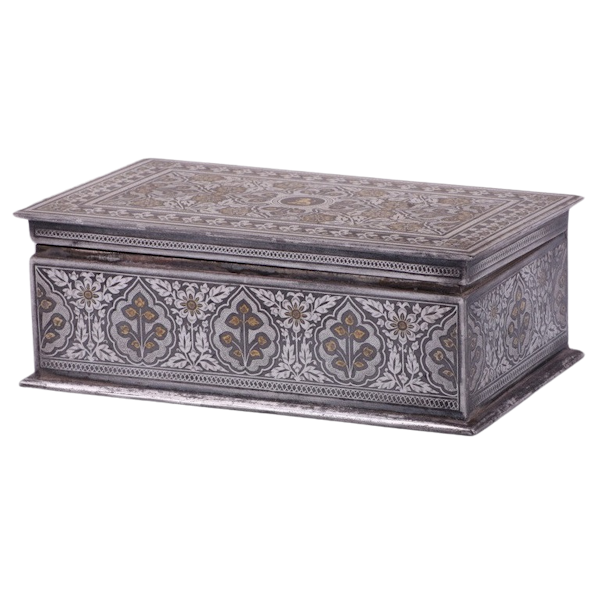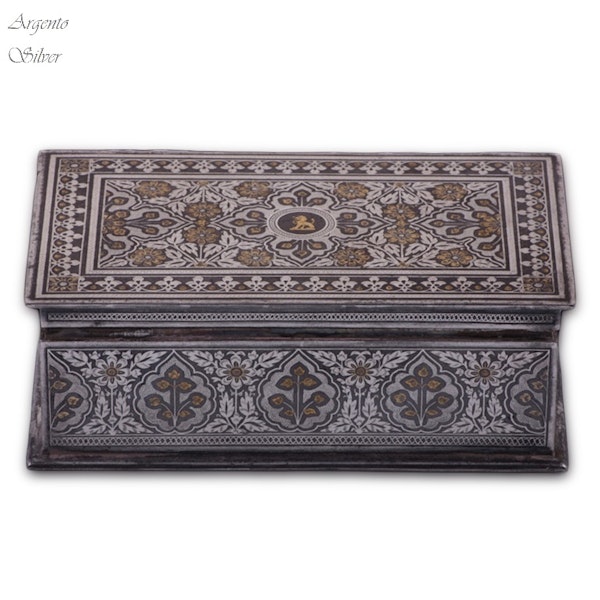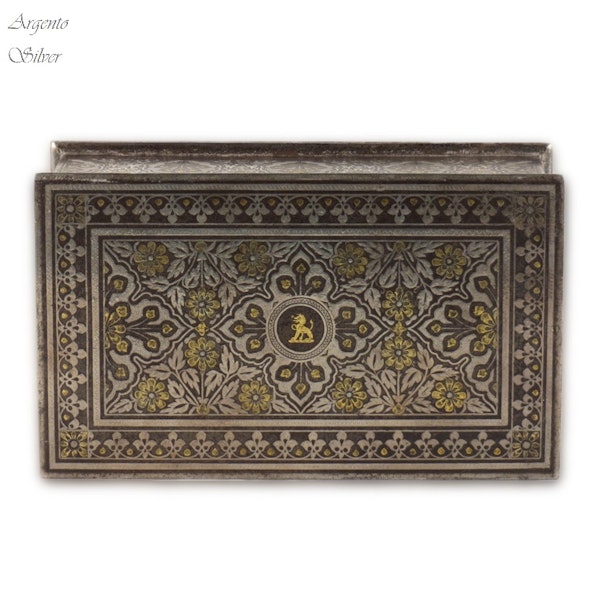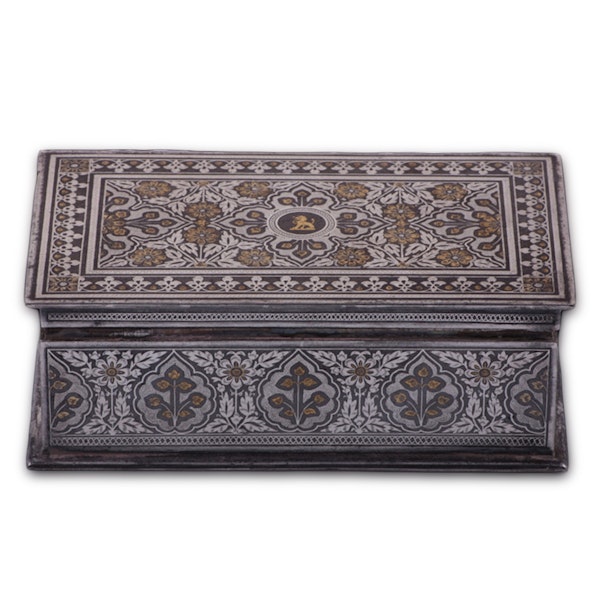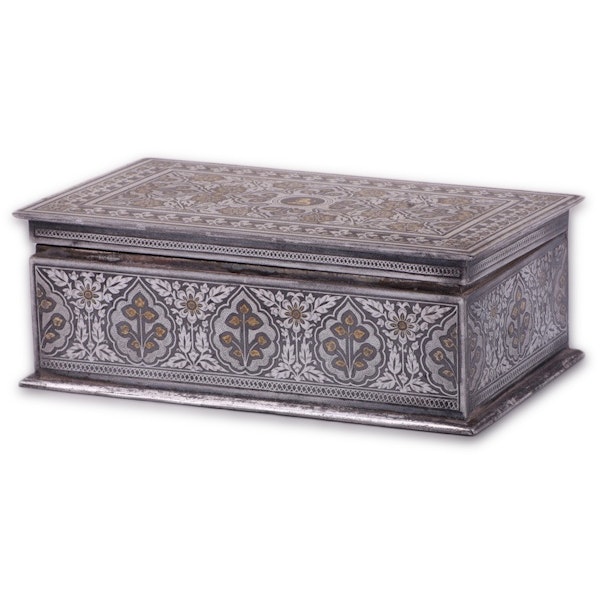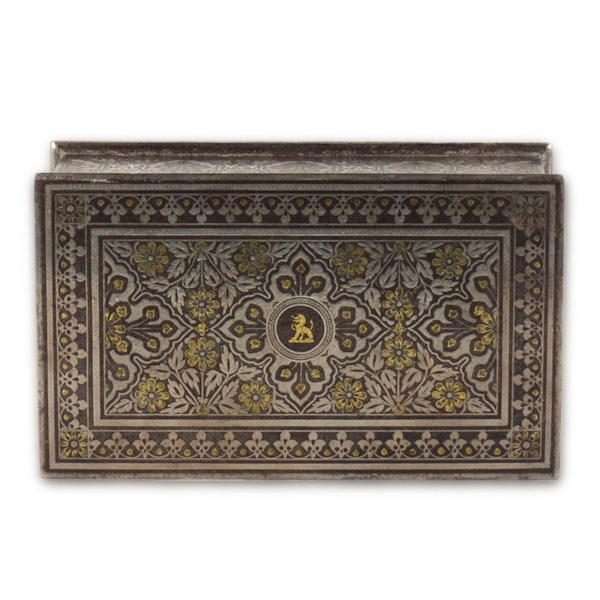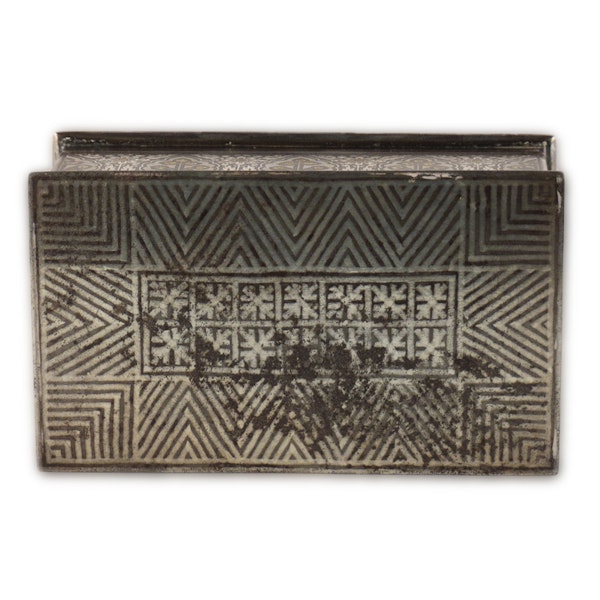ANTIQUE INDIAN KOFTGARI BOX, INDIA – 19TH CENTURY
ANTIQUE INDIAN KOFTGARI BOX, INDIA – 19TH CENTURY
£1,200.00
Description
Of rectangular form with wooden interior and hinged lid. The central medallion on the lid with gilded inlay of a lion figure encircled by a profusion of floral patterns. The sides with several cartouches of sprouting flowers and flower heads. The underside with geometrical patterns and slight corrosion.
Koftgari ornamental work is a type of damascening often seen in Indian art. A steel object is inlayed with gold or silver. The steel base is first scored, creating a fine cross hatched grid, silver wire is then ‘pushed’ into the base following the intended design. Next, the silver wire is hammered in and heated, bonding the silver to the steel base.
The box uses two types of inlay work, which can be seen with a close examination. The first is a cross hatching technique, as mentioned before, and is the more common technique used in inlay work. The second is the hammered dot technique, and the design is drawn with a pointed steel tool.
It is most likely that this box was made by craftsmen in the Gujarat or Sialkot region of the Punjab. These craftsmen are renowned for fine Koftgari work which they mostly worked on weapons and armour – only later, with the decline of the Sikhs, did the craftsmen make articles for domestic use.
Provenance: UK
| item details | |
|---|---|
| Origin | Asian |
| Period | 19th Century |
| Style | Other |
| Condition | Excellent |
| Dimensions | Height: 5.5 cms, Length 16 cms, Width: 10 cms |
Product REF: 10087
